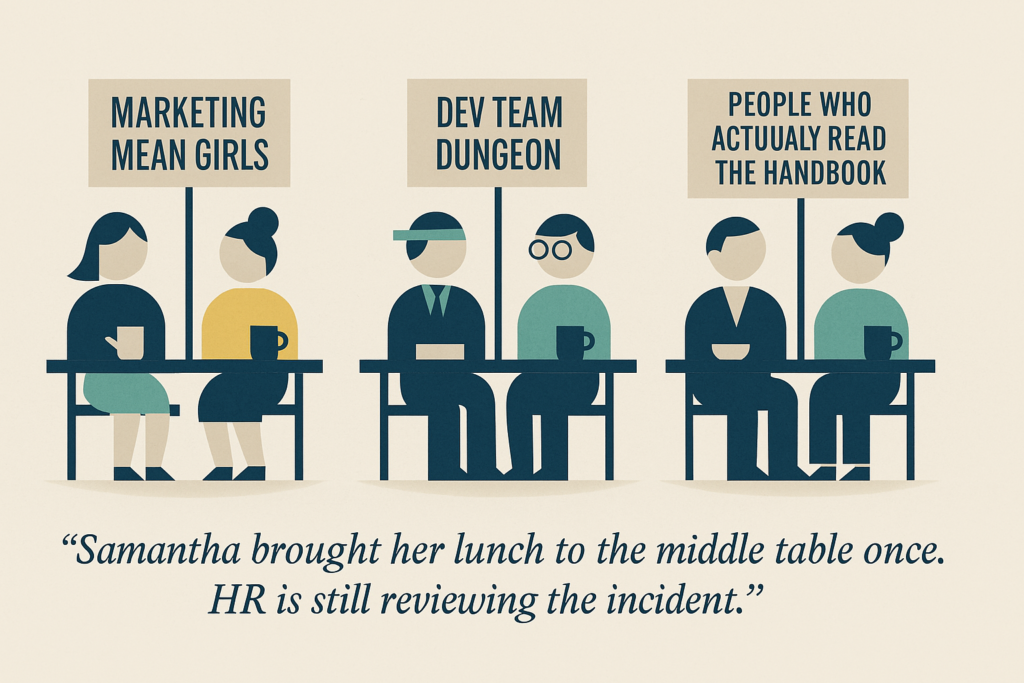The one rule we had to repeat every year to our staff was, “No summer camp love connections!”
This was part of a 10-day summer program I helped run for high school and college students. We trained the staff on how to help the students connect, but never too much.
Why?
Because if two students “couple up” (or as the cool kids say, “ship”), they emotionally and physically remove themselves from the greater community to spend as much time with their new love interest. Their relationship grows, sure, but their connection with the rest of the camp dropped off the map.
And once they hit ‘exclusive couple’ status, good luck getting them to care about team trivia or community meals. They were building their own private camp for two.
We saw it happen year after year. Two students go full rom-com mode on day three, and by day five, they’re skipping group activities, whispering in corners, also partnering up, and treating the rest of the camp like background characters in their coming-of-age love story.
Not ideal for team cohesion or community.
Flash forward to a recent training I did with the Air Force. One of the on-site leaders raised their hand and asked:
“How do I deal with an office clique that’s not supporting the full team?”
Different context. Same dynamic.
Deep connection with each other, but a brick wall to everyone else.
The Problem With Cliques
They go deep with each other and disconnect from everyone else. And that depth becomes a moat.
In Dance Floor Theory™, we talk about building a Culture of Connection™ which is a space where everyone feels seen, supported, and part of something bigger than themselves.
Cliques undermine that.
At first glance, they look like high-performing micro-communities: same lunch breaks, same jokes, same Slack channel with a name like “The Real Ones.” But dig deeper, and you’ll find people around them feeling left out, unheard, and disengaged.
Dance Floor Theory Insight
Using our Competency/Contribution Framework, this is a classic case of:
High Competency, Low Contribution.
These team members are productive in that they hit their deadlines, they know their stuff, but their impact stops at the edge of their clique. Their energy stays locked inside a closed loop with zero interest in helping others.
At best, they stay like this and are simply siloed.
But at worst?
They drift into what we call Negative Nellies who dismiss others’ ideas, resisting collaboration, and quietly chipping away at team morale. Their bond becomes a barrier. Instead of lifting the culture, they shrink it. As I’ve written about before,
Negative Nellies need to be dealt with because they will eat away at your team like the rotten core of an apple.
And if you read my recent post on Bounded Set Communities, this is the same pattern, just scaled down. A clique is a mini-bounded set: high internal loyalty, but rigid boundaries that prevent new people from entering. What once felt like team culture starts feeling more like a middle school lunchroom with every table silently screaming, ‘You can’t sit with us!’
How to Break Up a Clique Without Breaking Your Culture
- 🗣 Talk privately and assume the best. Approach the clique members with curiosity, not judgment. “You three have a great rhythm, how can we spread that energy to the rest of the team?” Try to leverage them to be part of the solution, not the problem.
- 🔄Change how collaboration happens. Rotate project partners, mix up work groups, or assign co-leads from different sub-teams. Help them find social bonds with other people outside their clique. Force new chemistry.
- 🎉Introduce new rituals that level the playing field. Think: round-robin wins of the week, peer shout-outs, or rotating icebreakers led by different people. Rituals flatten hierarchy.
- 🌉Celebrate connectors, not just closeness. Highlight team members who bridge gaps and bring others in. Recognition reinforces the behaviors you want repeated.
- 🚨Address exclusion directly if needed. If the clique becomes a source of gossip, resistance, or passive-aggressive behavior, call it out, privately and clearly. A clique that becomes a silo is now a performance problem.
Call to Action:
Next time you see a tight-knit trio that never loops others in, don’t just smile and say “They’re close.”
Ask yourself: Are they building culture, or blocking it?
Because here’s the truth: connection is good, exclusive connection is not. Your job as a leader isn’t to kill closeness. It’s to scale it.




